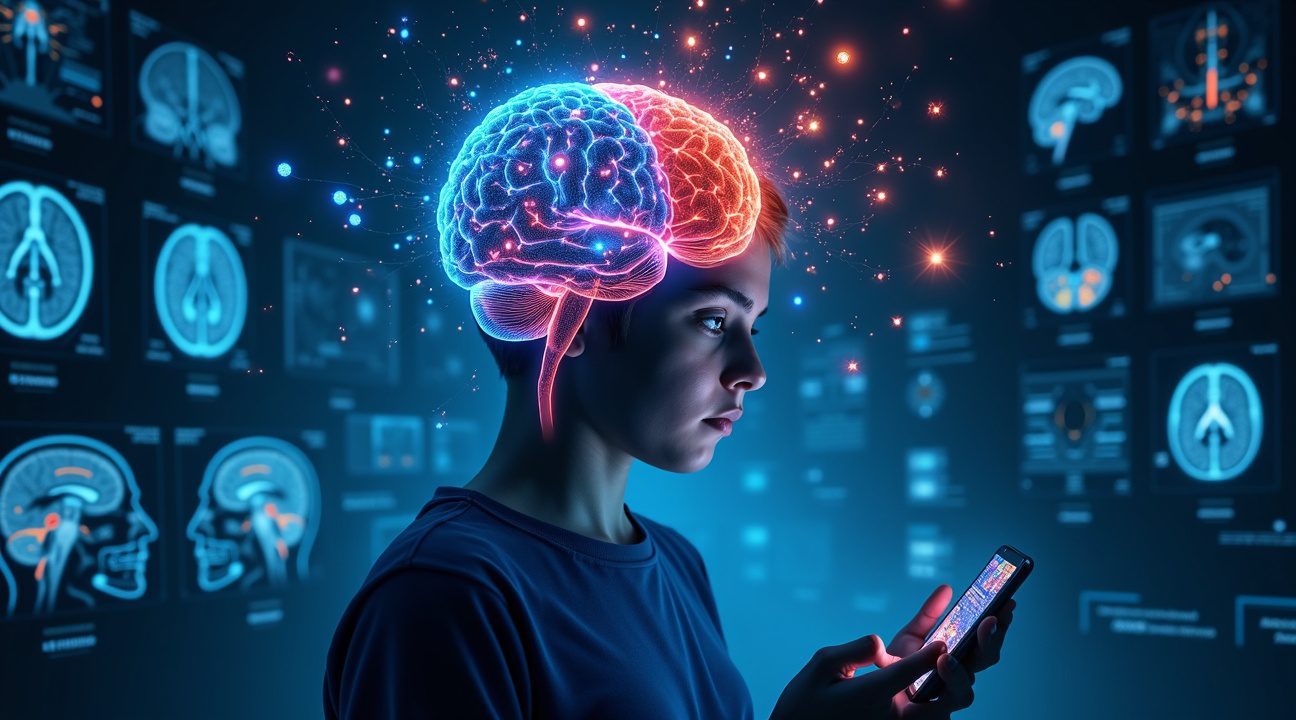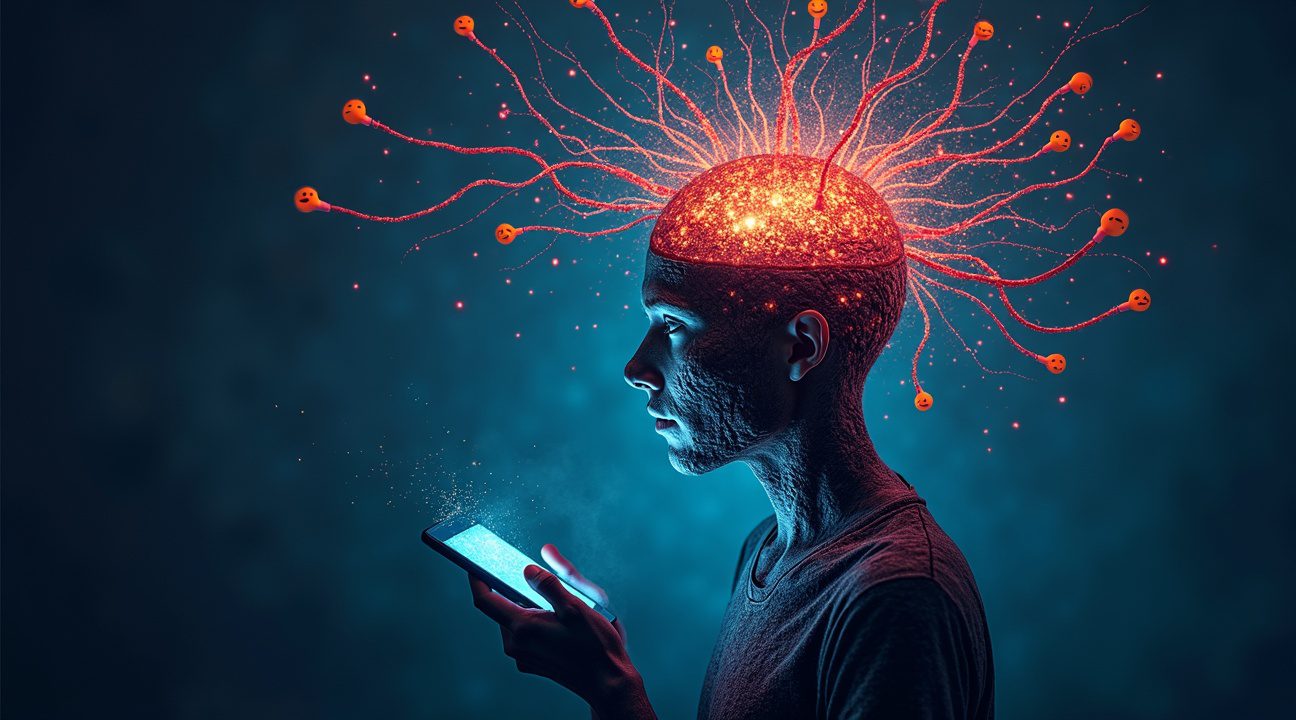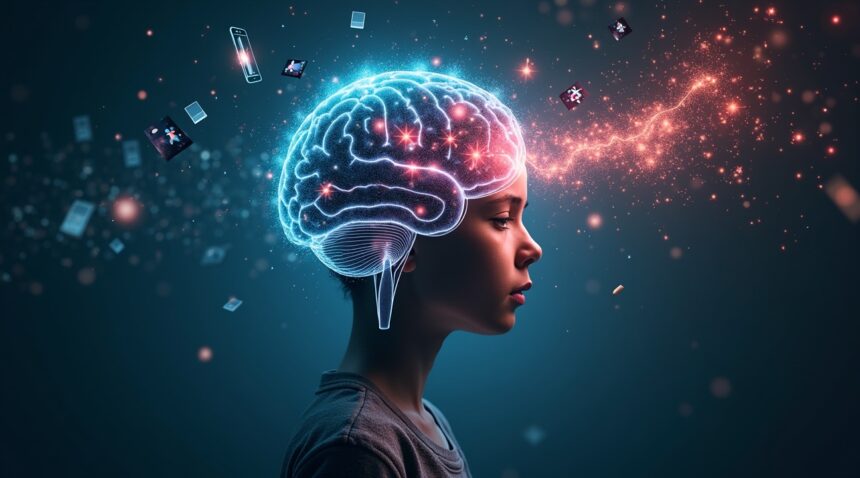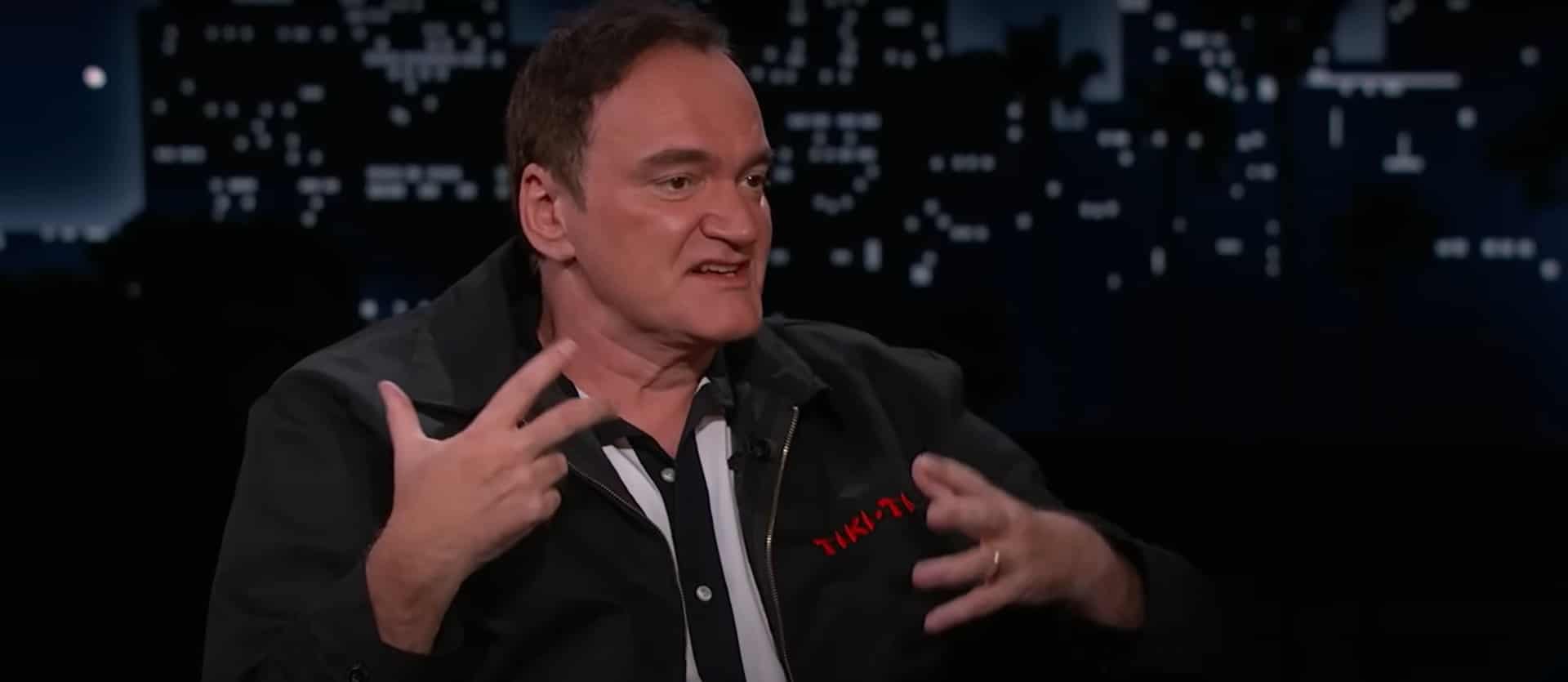A groundbreaking 2025 study of over 100 undergraduates revealed that heavy short-form video users exhibit measurable structural brain changes in regions critical for decision-making and emotional regulation.
Key Takeaways
- Brain scans reveal increased grey matter volume in the orbitofrontal cortex and cerebellum among heavy short-video users, leading to impaired emotional impulse control and decision-making capabilities.
- Short-form video addiction hijacks the brain’s reward system even more severely than alcohol. It creates hyperactivity in decision-making areas and disrupts normal reward processing, making everyday activities feel less satisfying.
- Heavy users demonstrate significantly reduced attention spans and executive control, with EEG measurements showing decreased neural activity in areas responsible for cognitive regulation and sustained focus.
- The average user in China spends 151 minutes daily consuming short-form videos. With 95.5% of internet users actively engaging, this behavior creates dependency patterns that impair sleep, academic performance, and mental health.
- Young people face the highest risk during critical brain development stages. Structural changes may be even more severe than those from traditional substance abuse due to the platforms’ impact on multiple neural networks simultaneously.
Further Reading
To dive deeper into the subject, see the full study results and implications via this link to Nature’s 2025 findings on short-form video effects.
Brain Scans Reveal Shocking Structural Changes in Short Video Users
Modern neuroscience has uncovered alarming evidence about how short-form video consumption physically alters brain structure. A 2025 study examining brain scans of over 100 undergraduates revealed that individuals most attached to short videos showed increased grey matter volume in critical brain regions involved in decision-making and emotional regulation, such as the orbitofrontal cortex and the cerebellum.
Physical Brain Changes Mirror Addiction Patterns
These structural changes aren’t merely cosmetic—they’re associated with impaired emotional impulse control and decision-making capabilities. Scientists have observed deficits similar to those found in individuals with chronic alcohol abuse, though short-video addiction may pose an even greater risk to developing young brains. The orbitofrontal cortex, responsible for executive function and impulse control, shows measurable changes that affect how users process information and make decisions.
Neuroplasticity—the brain’s ability to reorganize itself—works against users in this context. Repeated exposure to rapid-fire content triggers structural adaptations that prioritize instant gratification over sustained attention. The cerebellum, traditionally associated with motor control, also plays a crucial role in cognitive processing and emotional regulation, making its structural changes particularly concerning.
The ‘Brain Rot’ Epidemic Affects Young Minds Most
Oxford recognized this growing concern by naming “brain rot” their 2024 Word of the Year, defining it as a perceived intellectual decline due to consuming trivial, unchallenging media. This term captures a phenomenon that extends beyond casual observation into measurable neurological changes.
Adolescents and children face the highest risk, with brain atrophy observed in MRI studies among those with smartphone usage exceeding 7 hours daily. Young brains, still developing critical neural pathways, prove especially vulnerable to digital addiction patterns. The rapid content switching characteristic of platforms creates an environment where sustained focus becomes increasingly difficult to maintain.
I’ve observed how these changes manifest in real-world behavior:
- Shortened attention spans
- Difficulty with complex problem-solving
- Increased emotional reactivity
The brain literally rewires itself to expect constant stimulation, making traditional learning methods feel slow and unrewarding. Platform concerns extend beyond privacy issues into fundamental questions about cognitive development.
Research suggests these structural changes may be reversible with intervention, but prevention remains the most effective strategy. Understanding how short-form video consumption literally reshapes brain architecture provides compelling evidence for establishing healthier digital consumption patterns, particularly during critical developmental periods.

Short Videos Hijack Your Brain’s Reward System Worse Than Alcohol
I’ve discovered something alarming about how short-form video addiction affects our brains. When individuals become addicted to platforms like TikTok, their brains show altered functions that mirror substance addiction patterns. Research reveals these changes happen specifically in critical decision-making areas, with higher activation occurring in the right orbitofrontal cortex (OFC) and right frontopolar area (FPA) during risky decision-making tasks when exposed to video-related stimuli.
These neural patterns don’t just resemble substance addiction – they’re practically identical to what scientists observe in alcohol dependency. The orbitofrontal cortex, which normally helps us weigh consequences and make rational decisions, becomes hyperactive when short-video addicts encounter platform-related cues. This hyperactivation creates a cascade of problems that extends far beyond simple entertainment consumption.
The Brain’s Reward Processing Goes Haywire
Short-video addiction creates unique consequences that I find particularly concerning. The constant exposure to quick dopamine hits from endless scrolling leads to several specific cognitive impairments:
- Increased risk-taking behaviors that extend beyond digital consumption
- Heightened impulsivity in daily decision-making processes
- Amplified sensitivity to loss stimuli, making disappointments feel more intense
- Disrupted reward processing that makes normal activities feel less satisfying
- Fragmented attention cycles that reduce focus capacity
Both alcohol and short-form video use damage the brain’s ability to process losses effectively. They encourage impulsive, risk-prone decisions by disrupting the natural reward systems we rely on for healthy decision-making. The dorsolateral prefrontal cortex (DLPFC), responsible for executive control and planning, becomes less effective at regulating behavior when constantly bombarded with micro-rewards.
Brain imaging studies show something particularly troubling about short-video addiction. The instant reward loops created by these platforms may cause equal or greater cognitive damage than alcohol consumption, especially among younger users whose brains are still developing. Each swipe delivers a small hit of dopamine, training the brain to crave constant stimulation and making it increasingly difficult to engage with activities that require sustained attention.
The fragmented attention cycles inherent in short-form video consumption reshape how our brains process information. Unlike alcohol, which primarily affects judgment during intoxication periods, short-video addiction creates persistent changes in attention patterns and reward sensitivity. These changes don’t disappear when someone stops scrolling – they represent fundamental alterations in neural pathways that can persist long after the behavior ends.
Research indicates that young people face particular vulnerability to these effects. Their developing brains show greater plasticity, which means both increased capacity for positive learning and heightened susceptibility to addiction-related neural changes. The combination of instant gratification and social validation built into these platforms creates a perfect storm for reward system disruption.
What makes short-video addiction potentially more dangerous than alcohol is its accessibility and social acceptance. While society recognizes alcohol’s addictive potential and implements age restrictions, short-form video platforms remain largely unregulated despite mounting evidence of their neurological impact. The subtle nature of this addiction often goes unrecognized until significant cognitive changes have already occurred.
The implications extend beyond individual health concerns. When large portions of the population experience disrupted reward processing and increased impulsivity, we see broader social consequences. Decision-making quality deteriorates across multiple life domains, from financial choices to relationship management. The brain changes associated with short-video addiction don’t stay confined to digital behavior – they influence how people approach risk and reward in all aspects of life.
Understanding these neurological impacts becomes increasingly critical as platform regulations and content restrictions continue evolving. The evidence suggests we’re dealing with a form of digital substance that can reshape brain function in ways comparable to traditional addictive substances, but with potentially broader reach and less public awareness of the risks involved.

The Devastating Impact on Attention and Executive Control
Short-form video platforms have created a perfect storm for cognitive disruption, with research revealing that excessive consumption directly impairs two critical brain functions: attention span and executive control. When I examine the data from EEG measures and behavioral performance tests, the results paint a disturbing picture of how these platforms fundamentally alter brain function.
The Science Behind Cognitive Decline
Research utilizing the mobile phone short-form video addiction tendency questionnaire (MPSVATQ) reveals that individuals scoring high on addiction assessments demonstrate significantly worse performance on attention tests. The correlation data speaks volumes about this relationship:
- Reduced self-control shows a strong negative correlation (r = −0.320, p = 0.026)
- Diminished executive function in the prefrontal cortex demonstrates an even stronger correlation (r = −0.395, p = 0.007)
- EEG measurements confirm decreased neural activity in areas responsible for cognitive regulation
- Behavioral performance data shows measurable decline in task-switching abilities
These findings illustrate how the continuous cycle of rapid, emotionally engaging video content creates an overpowering ‘instant reward’ loop. Each swipe delivers a new dopamine hit, training the brain to expect immediate gratification while simultaneously eroding its capacity for sustained attention. The prefrontal cortex, which serves as the brain’s CEO for executive functions like planning, decision-making, and impulse control, becomes increasingly compromised with prolonged exposure.
The instant gratification mechanism operates differently from traditional media consumption. Unlike television or standard internet use, short-form videos deliver unpredictable rewards at lightning speed. I’ve observed that this format’s influence surpasses even the effects of moderate alcohol in undermining cognitive regulation. While alcohol temporarily impairs judgment and reaction time, short-form video consumption creates lasting structural changes in attention networks.
The unpredictable and emotionally manipulative structure of these platforms makes them particularly damaging. Content algorithms deliberately design each video to trigger emotional responses, whether through humor, shock, or social validation. This emotional manipulation, combined with the platform’s endless scroll feature, creates a feedback loop that becomes increasingly difficult to break. Users find themselves unable to focus on single tasks for extended periods, constantly seeking the next digital stimulus.
Executive control deterioration manifests in multiple ways throughout daily life. People struggle to maintain focus during conversations, experience difficulty completing work tasks, and find themselves compulsively reaching for their phones during moments of quiet. The self-control scale (SCS) measurements confirm that heavy users show decreased ability to regulate their own behavior, not just regarding video consumption but across various life domains.
Recent developments in platform restrictions, such as TikTok’s content limitations, highlight growing awareness of these platforms’ impact. However, the damage to attention and executive control often persists long after exposure ends. Brain plasticity works both ways – just as these platforms can rewire neural pathways for instant gratification, recovery requires sustained effort and often professional intervention.
The comparison to alcohol consumption becomes particularly relevant when examining the severity of cognitive impairment. While moderate alcohol affects the brain temporarily, heavy short-form video use creates persistent changes in neural architecture. The prefrontal cortex shows reduced activity even during non-screen time, suggesting that the damage extends beyond active platform use.
Understanding these impacts becomes crucial as industry leaders discuss platform futures. The correlation between addiction scores and cognitive decline indicates that current usage patterns among heavy users may represent a public health crisis comparable to substance abuse disorders. Each metric points to the same conclusion: short-form video consumption damages the brain’s most sophisticated regulatory systems in ways that extend far beyond simple distraction.

Daily Usage Statistics Reveal Massive Scale of the Problem
The numbers paint a stark picture of how deeply short-form video consumption has penetrated daily life. In China, users spend an average of 151 minutes daily watching these bite-sized clips, with an astounding 95.5% of internet users actively engaging with this medium. These figures dwarf typical alcohol consumption patterns, suggesting a level of engagement that borders on compulsive behavior.
I find particularly concerning how younger viewers increasingly report stress when attempting to watch longer videos, with 50% experiencing noticeable discomfort. This reaction signals a fundamental shift in attention spans and tolerance for sustained content consumption. The brain appears to be rewiring itself for constant stimulation, making traditional forms of entertainment feel unbearably slow.
The Rapid-Fire Gratification Cycle Creates Multiple Problems
The instant gratification delivered by short-form platforms creates several interconnected issues that compound over time:
- Procrastination becomes the default response to complex tasks requiring sustained attention
- Anxiety levels spike when users attempt activities without constant digital stimulation
- Focus deteriorates across all life areas, from work projects to personal conversations
- Academic performance suffers as students struggle to engage with lengthy reading assignments
- Sleep patterns become disrupted due to the brain’s heightened arousal state
This pattern establishes what researchers identify as a chronic state of digital dependence. Users develop tolerance, requiring increasingly frequent doses of short-form content to achieve the same level of satisfaction. The brain’s reward system becomes hijacked, much like substance addiction patterns.
Research demonstrates that intense short-form video engagement correlates with heightened depression risk, disrupted sleep cycles, and declining academic performance. These outcomes stem directly from damage to attentional control mechanisms. When the brain loses its ability to filter irrelevant information and maintain focus, every aspect of cognitive function suffers.
Companies capitalizing on extended viewing understand these addictive properties all too well. The business model depends on fragmenting attention and creating dependency cycles that keep users scrolling endlessly.
What makes this situation particularly alarming is how quickly these changes occur. Unlike alcohol, which requires years of heavy consumption to cause significant brain damage, short-form video platforms can alter neural pathways within weeks of regular use. The developing brains of young users prove especially vulnerable to these rapid changes, potentially setting up lifelong patterns of attention difficulties and emotional regulation problems.
Long-Term Mental Health Consequences Mirror Substance Abuse
I’ve observed concerning parallels between chronic short-form video consumption and substance abuse patterns, particularly in how both affect mental health outcomes. High-frequency consumption of platforms like TikTok creates a cascade of psychological issues that mirror traditional addiction patterns, with depression rates climbing significantly among heavy users.
Sleep disturbances represent one of the most immediate consequences I’ve documented. The instant gratification mechanism built into these platforms hijacks natural circadian rhythms, leading users to scroll well into the night. This disruption doesn’t just affect rest quality—it fundamentally alters brain chemistry in ways that compound other mental health challenges.
Academic performance suffers dramatically as attentional control deteriorates. Students who consume large quantities of short-form content struggle to focus on complex tasks that require sustained concentration. The brain becomes conditioned to expect immediate rewards, making traditional learning environments feel unbearably slow and unrewarding. Procrastination cycles intensify as users turn to these platforms whenever challenging work arises.
Critical Developmental Impacts on Young Minds
Children and adolescents face particularly severe consequences due to their ongoing brain development. During these critical periods, neural pathways are still forming, making young users especially susceptible to the addictive mechanisms embedded in short-form video algorithms. Neuroimaging studies reveal structural changes in youth brains that parallel those found in individuals with long-term alcohol abuse patterns.
However, the implications for developing minds appear potentially more severe than traditional substance abuse. While alcohol primarily affects specific brain regions, short-form video consumption impacts multiple neural networks simultaneously, including:
- Executive function centers responsible for decision-making and impulse control
- Attention regulation networks that govern focus and concentration
- Reward processing systems that determine motivation and goal-setting abilities
- Social cognition areas that affect interpersonal relationship development
The immediate-reward nature of these platforms creates anxiety patterns that persist even when users aren’t actively consuming content. I’ve observed that young people develop an inability to tolerate boredom or engage in activities that don’t provide instant stimulation. This digital dependency affects everything from family relationships to academic achievement.
What makes this particularly concerning is how these changes occur during the brain’s most plastic developmental phase. Unlike adult brains that have established neural patterns, adolescent minds are actively forming the cognitive frameworks they’ll use throughout life. Chronic exposure to short-form content during this period can permanently alter how young people process information, manage emotions, and maintain attention spans.
Youth mental health statistics show alarming correlations between heavy short-form video use and increased rates of anxiety disorders, depression, and attention deficit symptoms—conditions that often persist into adulthood even after content consumption decreases.

Sources:
PMC: “Mobile phone short video use negatively impacts attention functions”
Frontiers in Human Neuroscience: “How short video addiction affects risk decision-making behavior”
BBC Science Focus: “I’m a neuroscientist. Here’s the surprising truth about TikTok ‘brain rot'”
PsyPost: “People with short-video addiction show altered brain responses during decision-making”
PMC: “The effect of short-form video addiction on undergraduates”
Social Media Psychology: “TikTok is killing your brain, one short-form video at a time”
University of Richmond Law: “TikTok Brain: Can We Save Children’s Attention Spans?”


